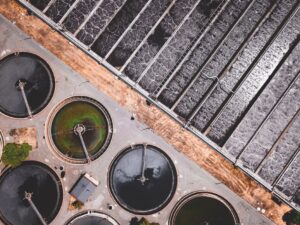APPLICATIONS OF TECHNOLOGY:
- Removal of selenium for wastewater and drinking water treatment
BENEFITS:
- Enables electrification of the water treatment industry, contributing to a more sustainable and energy efficient future
- Cost effective – uses low cost materials like iron and nickel
- Efficient pollutant removal
- Little to no biological byproducts
BACKGROUND:
Selenium (Se) is a water pollutant that can harm aquatic ecosystems and cause health issues in humans through long term exposure. The U.S. Environmental Protection Agency currently recommends biological treatment as a method for removing Se from wastewater. However, the biological Se removal methods are very sensitive, requiring specific water quality conditions. Hence its effectiveness can vary depending on water characteristics. Additionally, biological treatment can result in toxic biological byproducts.
Direct electrochemical reduction (DER) is an alternative water treatment method, as it can be tuned to remove specific pollutants and is less influenced by various water characteristics. Additionally, DER can pave the way for electrification of the water treatment industry, which is critical for a sustainable and energy efficient future.
State of the art electrodes for removing Se from water use gold, which is expensive, therefore limiting its widespread use. Cost-effective electrocatalysts are needed in order to scale DER as a water treatment method.
TECHNOLOGY OVERVIEW:
Scientists at Berkeley Lab have developed iron and nickel based electrocatalyst materials that can be used to modify the surface of various electrodes, including carbon-based electrodes, metal-based electrodes, semiconductor electrodes, etc., for electrochemical reduction of Se. When a cathodic potential is administered to the electrodes that have been enhanced with these iron/nickel electrocatalysts, the high-valence selenium pollutants will undergo reduction to form low-valence selenium. This transformed selenium can then either precipitate from the aqueous solution or deposit onto the modified electrodes.
In addition to being much lower cost than gold based electrocatalysts, the scientists found that these iron/nickel electrocatalysts displayed a much higher removal rate than commercial gold catalysts. These iron/nickel electrocatalysts also have good stability in natural aqueous environments.
DEVELOPMENT STAGE:
System validation in laboratory environment
PRINCIPAL INVESTIGATORS:
Wei Tong
Shengcun Ma
IP Status:
Patent pending
OPPORTUNITIES:
Available for licensing or collaborative research
